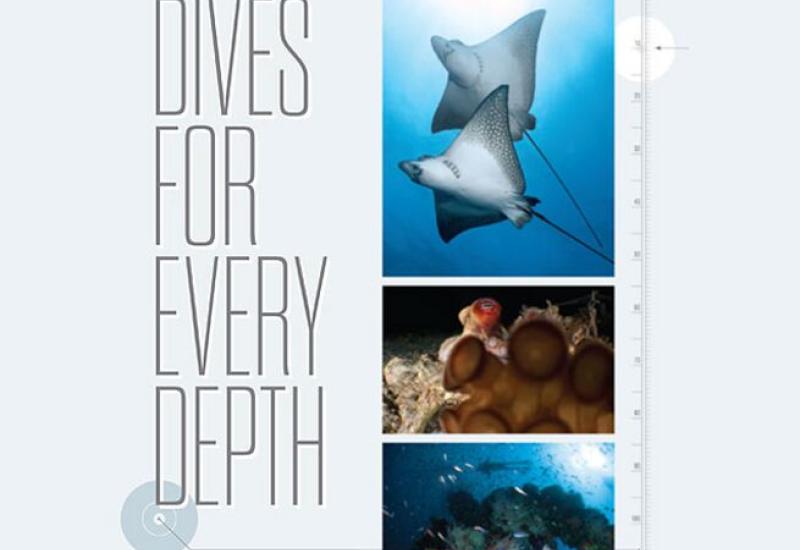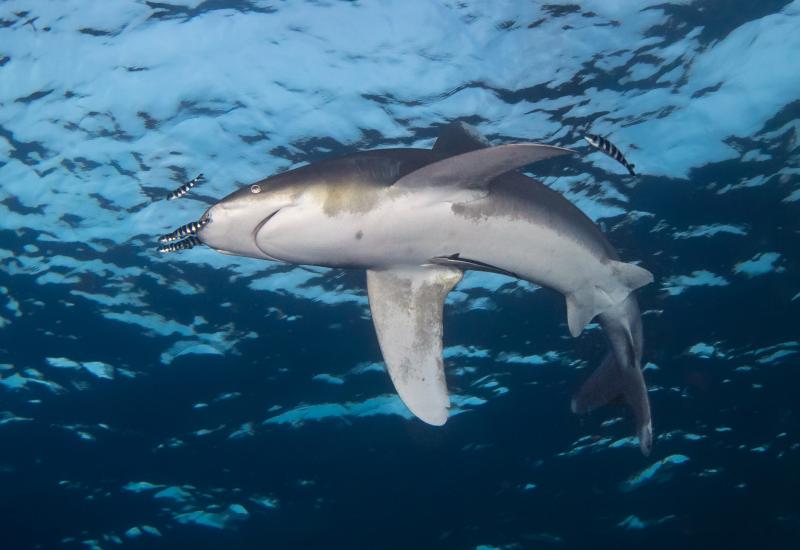The Northern Red Sea is the Place to Be

Michael FuscoA dugong in Marsa Alam — always a treat to see!
Filled with a fresh sense of excitement and heightened senses, I set out for the dive trip of a lifetime. I boarded the first of five flights from my small island in the Western Pacific, headed for the center of the old world; Cairo Egypt.
I was introduced to one of the most diverse ecosystems in the world during my dives in the North Red Sea. The trip began aboard Blue Planet's luxurious liveaboard, the MS Blue. Our schedule began with a standard checkout dive at the site Poseidon—a local dive site on the coastline of Hurghada. Here we were greeted by large schools of reef fish, numerous lionfish, and most memorably, giant moray eels. After the checkout dive, we headed north to one of the most famous wreck dives in the Red Sea, the SS Thistlegorm.

Michael FuscoUSS Thistlegorm is a favorite among divers to the Red Sea.
The SS Thistlegorm is a World War II-era merchant Navy ship that went down with its holds full of war materials. While diving the ship you will see trucks, motorcycles, aircraft parts, guns and ammunition. You can expect great —more than 100ft on a typical day. The wreck sits upright, her holds are very accessible and she has a great story behind her. This site makes for a beautiful night dive as well since blue-spotted stingrays appear in the evening in addition to your typical night critters. This is an absolute "must-do" dive that cannot be missed.

Michael FuscoA diver peers around a coral head on a wall dive at Brothers in the North Red Sea.
The next bucket list dive site we visited was the national park, Ras Mohammad. The area contains many plateaus and pinnacles that cut the current in a way that creates a feeling of constant current, coming from all directions at once. When the currents are swirling around, the massive schools of fish take advantage of the currents and easily engulf you with their presence. We witnessed giant schools of unicornfish, trevally, barracuda and even schools of tuna cruising by in the open blue. After a full day of diving at Ras Mohammed, we cruised through the night to the treasure of the Red Sea, a site called Brothers.

Michael FuscoA giant moray eel greets diver and photographer Michael Fusco.
The dive site Brothers is made up of two small islands, appropriately named big brother and little brother and can only be reached by a liveaboard vessel. Below the surface, the Islands reveal sheer walls on all sides and maintain a constant north to south current along the east and west sides. These walls are teeming with life that feed off of the current. Words seem inadequate when attempting to describe the size of the giant sea fans. Some sea fans are so large, you could easily hide several divers behind each one, and it would only be the divers bubbles that would give their location away. During our visit, we were treated with hammerheads, whale sharks, giant barracuda, and even the very shy and elusive thresher shark. There are not many other places in the world where you can see a variety of sea life like this.

Michael FuscoSea fans big enough for multiple divers to hide behind!
The itinerary of the North Red Sea is friendly to all levels of divers. There are lush reef scapes, numerous shipwrecks, large groups of schooling fish, and plenty of pelagics to satisfy all types of explorers. The Red Sea truly is one of the top dive destinations in the world. Whether you are diving from one of the luxurious shore diving resorts in Egypt, or one of the many liveaboards, you will have one of the most thrilling dive experiences of your life in the North Red Sea.










